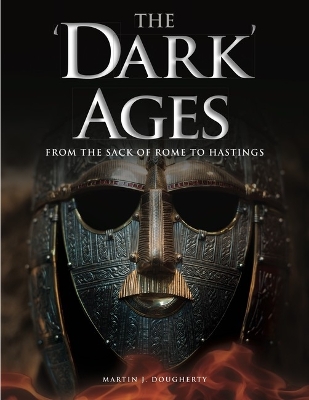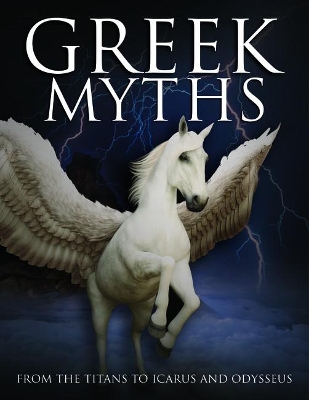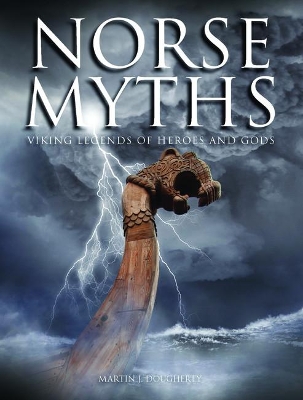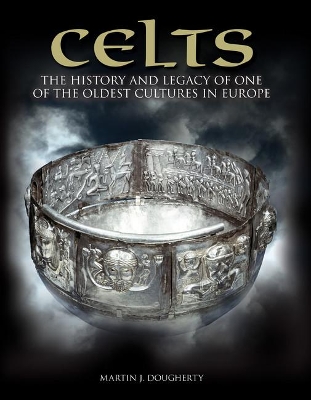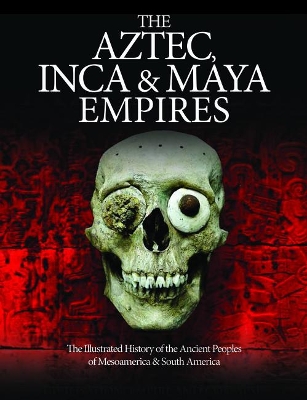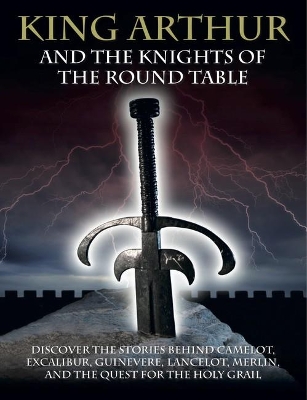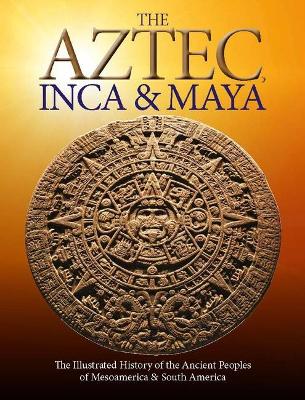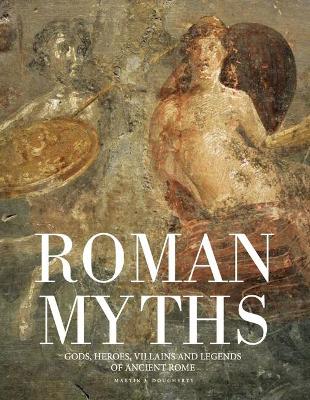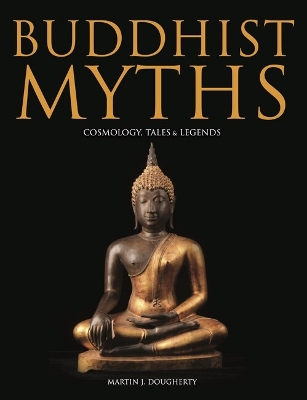Histories
10 total works
From the ancient Sanskrit texts of the Upanishads, Vedas, Mahabharata and Ramayana, the characters, gods and narratives of Hinduism emerged to demonstrate the moral precepts, duties and correct behaviour of Hinduism. Learn about Vedic cosmology, which is divided into four cyclical Yugas, or epochs, and which has no beginning or end; or the creation myth of Varaha, a powerful boar who saved the earth from primordial waters; or the legend of Rama, who against great odds rescues his love Sita from the demon-king Ravana; or Vishnu, the greatest god in the Hindu Trimurti (triad), who takes the form of nine different avatars and stops the earth from being destroyed through preserving Atman, the unchanging ultimate reality.
Illustrated with 120 photographs and artworks, Hindu Myths is an accessible, engaging and highly informative exploration of the complex mythology underlying one of the world’s oldest and most influential religions.
From the fall of the Western Roman Empire in the 5th century to the 11th century, The 'Dark' Ages tells the story of this fascinating but much misunderstood period in medieval history. Featuring the fragmentation of the Western Roman Empire and re-emergence of unity under Charlemagne; the emergence of the Catholic Church as a dominant political force; the raids, trading life and settlements of the Vikings, the book expertly reappraises the early Middle Ages.
Illustrated with 180 colour and black-&-white photographs, artworks and maps, The 'Dark' Ages is an exciting, engaging and highly informative exploration of this often overlooked period in early medieval history.
From Hades in the Underworld to Pegasus in flight, Greek Myths & Legends is an accessible introduction to the world of such characters as the Titans, Aphrodite and Poseidon. The book tells the story of Greek mythology from its creation myths and gods to its tales of mortals. Along the way we see the development of the pantheon of the major Greek deities, the dynastic struggles among the early gods, the creation of the Underworld and we learn how Ariadne, Medea and Perseus, among many others, fit into the mythic universe.
The book also examines how Greek myths have survived in written texts, ceramics, art and architecture, and the legacy of Greek mythology in Roman culture and the Middle Ages, as well as its revival in the Renaissance and its enduring appeal today.
Illustrated with 180 colour and black-&-white photographs, artworks and maps, Greek Myths & Legends is an engaging, highly informative exploration of a fascinating world and will appeal to anyone interested in legends and ancient cultures.
Norse Myths takes a wide-ranging approach, examining the creation stories of the Norse world, the monsters and the pantheons of the deities, including such figures as Heimdall, Freya and Baldr. It looks at the sagas and the Prose and Poetic Eddas, which tell of real and imagined people, featuring both heroic tales and humorous escapades. The book also examines how Norse myths were interpreted in a Christianized Europe and how their motifs influenced medieval German writers and, in turn, were used in the modern world in very different ways, by the likes of composer Richard Wagner and in the writings of J.R.R. Tolkien.
Illustrated with 180 colour and black-&-white artworks and illustrations, Norse Myths is an engaging and highly informative exploration of a rich mythology that still resounds today.
Before the Vikings, before the Anglo-Saxons, before the Roman Empire, the Celts dominated central and western Europe. Today we might think of the Celts only inhabiting parts of the far west of Europe - Ireland, Great Britain, France and Spain - but these were the extremities in which their culture lasted longest. In fact, they had originated in Central Europe and settled as far afield as present day Turkey, Poland and Italy.
From their emergence as an Iron Age people around 800 BC to the early centuries AD, Celts reveals the truth behind the stories of naked warriors, ritual beheadings, druids, magic and accusations of human sacrifice. The book examines the different tribes, the Hallstatt and La Tene periods, as well as Celtic survival in western Europe, the Gallic Wars, military life, spiritual life, slavery, sexuality and Celtic art.
Celts is an expertly written account of a people who have long captured the popular imagination.
From government structures to marriage rites, from pyramids to human sacrifice, from agriculture to textiles, astronomy to hieroglyphics to ball games, the book explores the history of what today we call Latin America from its early kingdoms up to the crippling of the societies with the arrival of conquistadores and smallpox.
The biggest Mesoamerican cities, such as Teotihuacan, Tenochtitlan and Cholula, were among the largest in the world. Mesoamerican civilisations are credited with many inventions: building pyramid-temples, mathematics, astronomy, medicine, writing, highly accurate calendars, fine arts, intensive agriculture, engineering, an abacus calculator, and complex theology. In South America, the Inca Empire, the largest empire in pre-Columbian America, was, at its height, possibly the largest in the world. And yet it achieved this without wheeled vehicles, animals to ride or draft animals, without using iron or steel, or developing a written script.
Easily accessible and illustrated with 180 colour and black-and-white photographs, maps and artworks, the Aztec, Inca and Maya Empires is a fascinating account of Mesoamerican and South American civilisations from the 2nd century BCE to the 16th century CE.
– Inscription found at Glastonbury in the late 12th century
King Arthur most probably never existed and – even if he did – we know precious little about him, and yet he is one of the most famous Britons, while Excalibur and Camelot are perhaps the world’s best known sword and castle. So, what’s the truth behind King Arthur? How did the legends take hold? And why have they endured for so long?
Long before the Marvel Universe there was the universe of Arthurian romance, and King Arthur and the Knights of the Round Table examines the fact and the fiction behind Arthur, Lancelot, Merlin, Guinevere, Galahad, among others, as well as the quest for the Holy Grail. Beginning in the 12th century, the book explores what factual basis there is for the tales and how the characters, stories and motifs developed through histories, epic poems and prose tellings. The book also charts the revived interest in Arthurian romance in the 19th century and considers how the tales still hold the popular imagination today.
Illustrated with more than 180 colour and black-and-white artworks and photographs and maps, King Arthur and the Knights of the Round Table is an expertly written account of where literature, mythology and history meet.
The Roman tendency to accept their mythology as part of history creates a degree of uncertainty around the historical basis of the figures featured in these legendary tales. Truth, fiction, or both, the significance of mythology to this people is palpable.
From Romulus and Remus and the founding of Rome to Lucretia and the Republic; from Livy and the Dii Consentes to Virgil’s Aeneid; from Dis Pater in the underworld to Jupiter, god of the sky.
Illustrated with 180 colour and black-and-white photographs, artworks, and maps, Roman Myths is an engaging and informative book, offering an introduction to Roman mythology, its roots, and its ongoing importance.
The Buddhist traditions created a vast body of mythological literature, much of it focused on the life of the Buddha. For example, the 550 Jataka Tales tell of Buddha’s early life and renunciation, as well as his previous human and animal incarnations. The stories also tell of Gautama Buddha’s family, such as his mother Mara, and her dream of a white elephant preceding his birth; as well as his cousin, Devadatta, a disciple monk who rebelled against Buddha and tried to kill him. Buddhist literature includes numerous parables – such as the Turtle Who Couldn’t Stop Talking – as well as recounting scenes from the Indian epic the Ramayana. History and myth intermingle in texts such as Ashokavadana, where the Mauryan emperor Ashoka is portrayed as a model of Buddhist kingship.
Illustrated with 120 photographs and artworks, Buddhist Myths is an accessible, engaging and highly informative exploration of the fascinating mythology underlying one of the world’s oldest and most influential religions.

